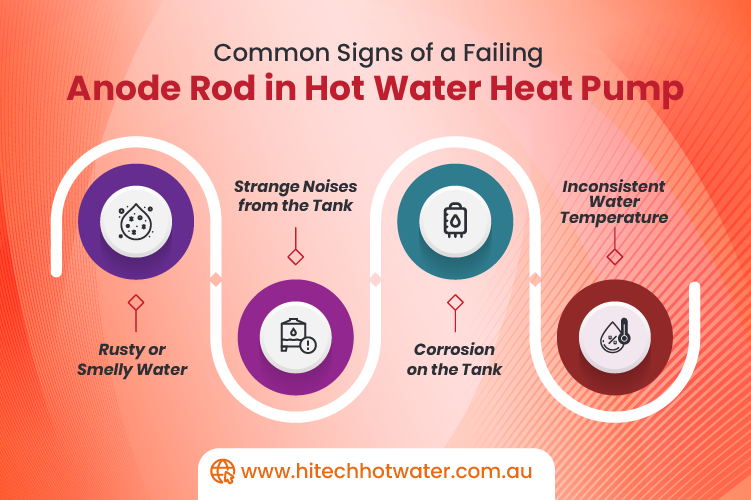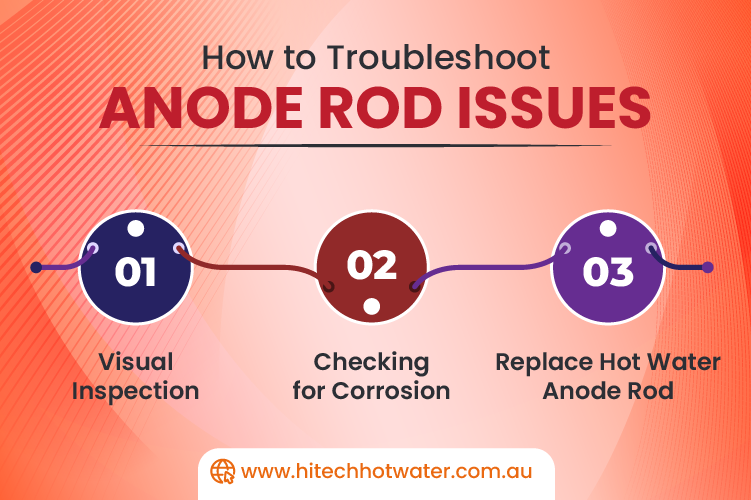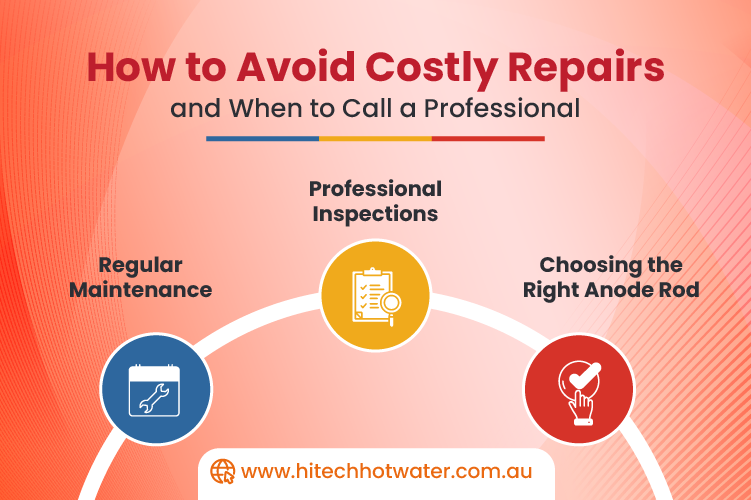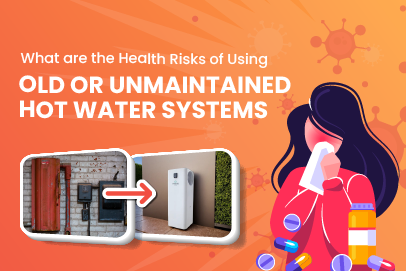When it comes to ensuring the longevity and efficiency of your hot water heat pump, the anode rod plays a pivotal role. Acting as a sacrificial component, the anode rod protects the tank from Sediments buildup inside the Tank, which can lead to costly repairs or even system replacement.
Despite its importance, many homeowners overlook this small but critical part of their system. Understanding its function, identifying warning signs of failure, and maintaining it can save significant time, money, and hassle.
What Is an Anode Rod and Why Is It Important?
Definition and Function
The anode rod is a metal rod, typically made of magnesium, aluminum, or zinc, installed inside the water tank.
Its primary purpose is to attract corrosive elements in the water, preventing them from attacking the tank's inner lining. This process, known as electrolysis, helps to safeguard the tank against rust and sediment buildup.
Impact on the Longevity of Heat Pumps
A functional anode rod is essential for extending the lifespan of your heat pump system. Without it, the tank's lining is left vulnerable to corrosion, leading to leaks and eventual system failure.
Regularly replacing the anode rod ensures optimal performance, reduces maintenance costs, and preserves the integrity of the tank.
Common Signs of a Failing Anode Rod in Hot Water Heat Pump

Rusty or Smelly Water
One of the first signs of a failing anode rod is discolored or foul-smelling or hard water. A worn-out rod can no longer attract corrosive elements, allowing rust to form inside the tank. This can result in water with a reddish tint or a sulfur-like odor.
Strange Noises from the Tank
If you hear popping or banging sounds from your hot water heat pump, it could indicate sediment buildup caused by a degraded anode rod. As sediment accumulates, it interferes with the heating process, causing noises and reducing efficiency.
Corrosion on the Tank
Visible corrosion on the exterior of the tank is a clear indication that the anode rod is no longer doing its job. Ignoring this can lead to severe structural damage, requiring a full tank replacement.
Inconsistent Water Temperature
A failing anode rod can disrupt the even distribution of heat in the tank, resulting in fluctuating water temperatures. This inconsistency can be frustrating and indicate underlying system issues.
How to Troubleshoot Anode Rod Issues

Visual Inspection
Start by visually inspecting the anode rod. This involves turning off the water supply, relieving tank pressure, and carefully removing the rod. Look for signs of rust, thinning, or damage. A rod that appears significantly corroded or less than half its original size should be replaced immediately.
Checking for Corrosion
Inspect the tank for signs of rust or discoloration around the water outlet. If the tank shows visible corrosion, it's likely that the anode rod has failed, and immediate action is needed.
Replace hot water anode rod
Sometimes, in extreme cases, the replacement of the anode rod is needed. To replace anode rod, follow these steps:
- Turn off the power supply to the heat pump and shut off the water.
- Use a socket wrench to remove the old rod from the top of the tank.
- Insert a new rod, ensuring it fits the model of your system.
- Tighten the rod securely and restore the water and power supply.
- For most systems, it's recommended to replace the anode rod every 3-5 years or as specified by the manufacturer.
How to Avoid Costly Repairs and When to Call a Professional

Regular Maintenance
Preventative care is the best way to avoid costly repairs. Periodically inspect the anode rod and clean your tank to minimize sediment buildup. Set a schedule to check the rod every 6 months.
Professional Inspections
While DIY maintenance can handle basic tasks, professional inspections are invaluable for catching complex issues early. Licensed technicians can evaluate the system, replace the rod, and ensure everything functions optimally.
Choosing the Right Anode Rod
Not all anode rods are created equal. Select a rod compatible with your heat pump model and consider local water conditions. For instance, magnesium rods work well in soft water, while aluminum or zinc rods are better suited for hard water areas. Consulting a professional can help you make the best choice.

Conclusion
The anode rod is a vital component of any heat pump system, protecting the tank from corrosion and ensuring efficient operation.
By regularly inspecting and replacing the rod, you can prevent issues like rust, sediment buildup, and inconsistent water temperatures.
Upgrading to a new rod, when necessary, not only avoids costly repairs but also extends the life of your system.
If you're unsure about the condition of your anode rod, don't hesitate to consult a professional or option to replace hot water heater anode rod. Stay proactive and enjoy a reliable and energy-efficient hot water system for years to come.






